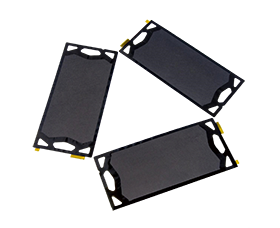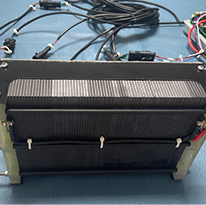El MEA, basado en la técnica CCM, es el componente clave de las celdas de combustible de hidrógeno (PEMFC), el corazón de las celdas de combustible de hidrógeno y el lugar preciso para la conversión de material químico en energía eléctrica. El MEA ha alcanzado un nivel avanzado a nivel mundial y ha sido galardonado con el Premio Internacional de Invención de Ginebra. Conjunto de electrodos de membrana (MEA) de 5 capas con capas de difusión de gas (GDL) integradas para su uso en celdas de combustible de hidrógeno/aire. Uno de los MEA más económicos y rentables del mercado.
Marca :
RubriPotencia nominal de salida :
5kW -200kWDescripción del Producto

MEA, basado en la técnica CCM, es el conjunto clave de PEMFC, es el corazón de la pila de combustible de hidrógeno, es el lugar correcto donde el material químico se convierte en energía eléctrica.
El MEA de Gatechn acaba de alcanzar una densidad de potencia de hasta 0,65 V a 2300 mA/cm², alcanzando un nivel avanzado a nivel mundial y ganando el Premio Internacional de Invención de Ginebra. Conjunto de electrodos de membrana (MEA) de 5 capas con capas de difusión de gas (GDL) integradas para su uso en pilas de combustible de hidrógeno/aire. Uno de los MEA más económicos y rentables del mercado. el mercado.
Introducción del producto
Un conjunto de electrodos de membrana (MEA) de una pila de combustible de hidrógeno es un componente crucial en una pila de combustible de membrana de intercambio de protones (PEMFC). Consta de varias capas que trabajan juntas para facilitar las reacciones electroquímicas que generan electricidad a partir de la reacción química entre el hidrógeno y el oxígeno. A continuación, se detallan los componentes y sus funciones dentro del MEA:
1. Capa catalizadora: El MEA tiene dos capas catalizadoras, una en cada lado. La capa catalizadora anódica facilita la oxidación electroquímica del hidrógeno (H₂) en protones (H+) y electrones (e-). La capa catalizadora catódica promueve la reducción del oxígeno (O₂).
en agua (H₂O) mediante la aceptación de protones y electrones. Catalizador desarrollado por nuestra empresa. Alta consistencia: distribución uniforme del tamaño de partícula de las nanopartículas. Alta resistencia electroquímica. Actividad: ECSA y MA son relativamente altos. Buena durabilidad: Mediante tecnología de recocido a alta temperatura, la vida útil del catalizador...
| Modelo | HPM-H151N |
| Carga de catalizador PGM (mg/cm²) | 0,45/0,35 |
| Rendimiento en pilas (W/cm²) | >1.5 |
| Durabilidad del catalizador en MEA | Ciclos de 0,6-0,95 V durante la pérdida de tensión < 30 mV a 0,8 A/cm y pérdida ECSA <40% |
| Durabilidad del soporte del catalizador en MEA | Ciclos de 1-1,5 V durante la pérdida de tensión < 30 mV a 1,5 A/cm2 y pérdida ECSA <40% |
Escenarios de uso múltiple

La pila de combustible de hidrógeno se puede utilizar en diversos escenarios:
1. Investigación sobre pilas de combustible PEM
2. Experimento con pila de combustible de hidrógeno
3.Demostración de energía de hidrógeno verde
4. Bicicleta/scooter/motocicleta propulsada por pila de combustible
5. Drones de hidrógeno/UAV de hidrógeno
6. Central eléctrica de hidrógeno portátil
--------------占位---------------